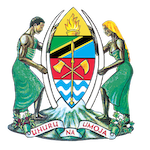Overview
Tanzania is a country located in East Africa, bordered to the north by Kenya and Uganda, to the west by Rwanda, Burundi, and the Democratic Republic of Congo, to the south by Zambia, Malawi, and Mozambique, and to the east by the Indian Ocean. Covering a total area of approximately 947,303 km², Tanzania is the largest country in East Africa. It has an estimated population density of about 67 people per km².
Tanzania is renowned for its rich cultural heritage, diverse wildlife, and breathtaking landscapes. It is home to Mount Kilimanjaro, Africa’s highest peak, and Serengeti National Park, famous for the Great Migration of wildebeest and zebras. The country also hosts the Ngorongoro Crater, a UNESCO World Heritage Site known for its dense population of wildlife, including the Big Five (lion, elephant, buffalo, rhino, and leopard). The Indian Ocean coastline features beautiful beaches, with Zanzibar being a major tourist attraction due to its white sandy shores, rich Swahili culture, and historical Stone Town. Additionally, Tanzania is home to Lake Victoria, Africa’s largest lake, and Lake Tanganyika, the world’s second-deepest freshwater lake.
The country is known for its diverse ethnic groups, with Swahili and English as the official languages. The economy is driven by agriculture, mining, tourism, and natural gas reserves. Tanzania is also recognized for its political stability and its role in regional cooperation within the East African Community (EAC)
1961
Independence
947,303 km²
Area
61 Million
Population
21°C - 31°C
Temperatures
72.7 years
Life Expectancy
$1,900
GDP per capita
The National Flag
The national flag of Tanzania consists of four colors arranged diagonally. From the bottom left to the top right, the flag features a green section followed by a narrow yellow stripe, then a black stripe in the center, and finally another narrow yellow stripe, with the top right section being blue. Each color has a symbolic meaning: Green represents Tanzania’s rich agricultural land and natural vegetation. Yellow symbolizes the country’s mineral wealth. Black signifies the people of Tanzania. Blue represents the Indian Ocean, as well as Tanzania’s rivers and lakes. The characteristics, description, ceremonial use, and respect of the National Flag are determined by law, ensuring it is treated with dignity as a symbol of national unity and sovereignty.
Coat of Arms
The Coat of Arms of the United Republic of Tanzania features a shield divided into four sections, resting on a representation of Mount Kilimanjaro. The shield is supported by a man and a woman, symbolizing gender equality and national unity. Below them is a scroll with the national motto, UHURU NA UMOJA, meaning Freedom and Unity. The Coat of Arms consists of the following elements: A warrior’s shield divided into four parts: The upper part (golden yellow) symbolizes the country’s mineral resources. The light blue section represents the Indian Ocean. The black and green sections symbolize the people of Tanzania and the country’s fertile land, respectively. A spear and an axe behind the shield, representing defense and hard work. A burning torch at the top of the shield, symbolizing enlightenment, freedom, and knowledge. A man and a woman standing on a base of cloves, cotton, and other crops, representing agriculture and the country’s economy. The Tanzanian Coat of Arms is a symbol of national identity, sovereignty, and unity, and its use is protected by law.
The National Anthem
The title of the National Anthem of Tanzania is “MUNGU IBARIKI AFRIKA” (God Bless Africa). It consists of several verses that express patriotism, unity, and a prayer for the nation’s prosperity and peace. The anthem is an adaptation of Nkosi Sikelel’ iAfrika, a song originally composed by Enoch Sontonga. The anthem praises Tanzania as a free and independent nation, highlighting the importance of unity, peace, and hard work for national development. It also calls for divine blessings upon the country and its people, emphasizing the values of love, brotherhood, and cooperation. “Mungu Ibariki Afrika” is not only the national anthem of Tanzania but also holds historical significance as it was adopted by several African nations as a song of unity and liberation.

